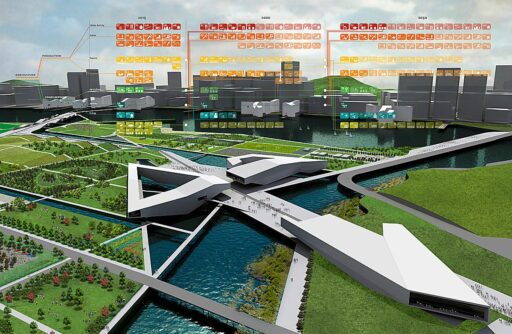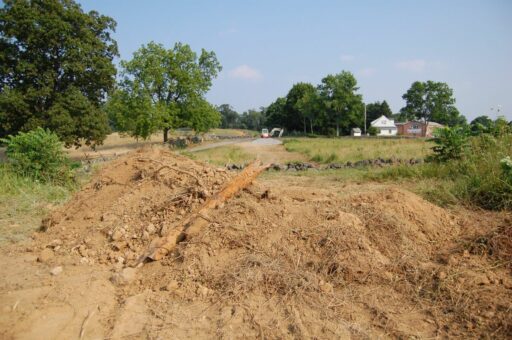Revitalizing your garden and outdoor space can be an exciting journey, and choosing the right local landscaping contractor is crucial for a successful transformation. This article provides a comprehensive guide on how to select the best professionals for your landscaping needs, along with innovative ideas to enhance your garden’s beauty and functionality. Discover the secrets to boosting curb appeal, creating inviting outdoor living spaces, and adopting sustainable landscaping practices for an eco-friendly approach. With the right planning and expert help, your outdoor space can become the oasis you’ve always dreamed of.
Key Takeaways
- Identify reputable landscaping contractors by evaluating their credentials, reviews, and previous work portfolios.
- Explore innovative landscaping ideas such as vertical gardens, edible landscapes, and low-maintenance designs to personalize your outdoor space.
- Understand how professional landscaping can significantly enhance your home’s curb appeal and potentially increase property value.
- Learn how to create functional and relaxing outdoor living spaces with features like patios, decks, fire pits, and water elements.
- Consider sustainable landscaping options like drought-tolerant plants, native species, and eco-friendly materials to benefit the environment.
Choosing the Right Landscaping Contractor

Evaluating Credentials and Reviews
When embarking on the journey to enhance your outdoor space, begin your search for a great landscaper by scrutinizing their credentials and past client reviews. A landscaper’s reputation is often reflected in the feedback they receive. Look for professionals with a strong online presence, as this can be an indicator of their commitment to their craft and customer satisfaction.
- Check for proper licensing and certifications.
- Read through customer testimonials and ratings.
- Investigate the frequency of positive versus negative reviews.
It’s essential to ensure that the landscaper you choose aligns with your project’s specific needs and has a track record of delivering quality work.
Remember, while reviews can provide valuable insights, they are personal opinions and should be considered as part of a broader evaluation. Always cross-reference reviews with other sources and, if possible, speak directly with past clients to get a more comprehensive understanding of the landscaper’s capabilities.
Understanding Landscaping Service Offerings
When embarking on a garden transformation, it’s crucial to understand the range of services offered by landscaping contractors. These services can vary widely, from basic lawn care to elaborate garden designs. Here’s a quick overview of common services:
- Lawn maintenance (mowing, edging, fertilization)
- Garden design and installation
- Hardscaping (patios, walkways, retaining walls)
- Irrigation systems
- Lighting and decorative features
Each service can significantly affect the outcome of your landscaping project, so it’s important to match your vision with the contractor’s expertise.
Additionally, some contractors specialize in eco-friendly solutions or offer seasonal maintenance plans. Be sure to inquire about the full scope of their services to ensure they align with your specific needs and preferences.
Comparing Quotes and Portfolios
When you’re ready to transform your garden, comparing quotes and portfolios is a crucial step in selecting the right landscaping contractor. Start by posting your project to receive estimates from trusted professionals in your area. It’s essential to compare not just the costs but also the scope and quality of services offered by each contractor.
- Post your project to receive estimates.
- Review and compare credentials.
- Examine portfolios for quality and style.
Remember, the lowest quote may not always represent the best value. Consider the balance between cost and quality to ensure your investment pays off in the long run.
Once you have a shortlist of potential contractors, delve into their portfolios. This will give you insight into their craftsmanship and whether their style aligns with your vision for your garden. The reviews and feedback from previous clients can also be a valuable resource in making your decision.
Innovative Landscaping Ideas for Your Garden

Incorporating Vertical Gardens
Vertical gardens are a smart solution for those looking to enhance their outdoor space without the need for extensive horizontal areas. Maximizing space in smaller yards or urban settings becomes not just possible, but also aesthetically pleasing with vertical gardening. By taking advantage of vertical space, you can introduce a variety of plants, from lush foliage to vibrant flowers, creating a living tapestry that transforms walls and fences into natural art.
Here are some key components for creating a vertical garden:
- Metal framing to provide sturdy support
- A sheet of rigid plastic as a backing
- Felt for the planting medium
These elements come together to form the backbone of a vertical garden, allowing for a space-saving color explosion in your outdoor area. It’s a method that not only adds beauty but can also contribute to better air quality and biodiversity.
Embracing vertical gardening is not just about aesthetics; it’s a step towards creating a more dynamic and environmentally friendly garden space.
Edible Landscaping: A Tasty Transformation
Edible landscaping is a creative way to beautify your outdoor space while yielding tasty fruits, vegetables, and herbs. Transform your garden into a bountiful paradise where aesthetics meet practicality. Imagine plucking ripe tomatoes and fragrant basil right from your flowerbeds, or harvesting apples from a dwarf tree that also serves as a focal point in your yard.
-
Plan Your Edible Landscape: Start by choosing plants that are both attractive and productive. Consider the following:
- Sunlight and soil requirements
- Seasonal growth cycles
- Complementary plant pairings
-
Incorporate Into Existing Design: Blend edible plants with ornamental ones to create a seamless look. Use raised beds, trellises, or containers to add structure and variety.
By integrating edible plants into your landscaping, you not only enhance the beauty of your garden but also invest in a sustainable source of fresh produce.
Remember, the key to a successful edible landscape is diversity. A variety of plants not only contributes to the overall health of your garden but also provides a longer harvest season and a more visually appealing space. With careful planning and design, your garden can be both a culinary treasure trove and a stunning outdoor retreat.
Low-Maintenance Landscapes for Busy Homeowners
For busy homeowners, the dream of a beautiful garden often clashes with the reality of their schedules. A low maintenance yard can save you time and money, and it’s more attainable than you might think. By choosing the right plants and design elements, you can create a space that looks great year-round with minimal effort.
Embracing low-maintenance landscaping doesn’t mean sacrificing style or your personal taste. It simply involves making smart choices that align with your lifestyle.
Here are some key elements to consider for a low-maintenance landscape:
- Drought-tolerant plants: These require less watering and care.
- Mulching: Helps retain soil moisture and suppresses weeds.
- Automated irrigation systems: Ensures efficient water use and can be scheduled for convenience.
- Landscape fabric: Prevents weed growth and reduces the need for manual weeding.
Remember, the goal is to enjoy your outdoor space without being burdened by its upkeep. Professional landscaping contractors can provide valuable guidance and implement strategies that cater to your desire for a low-maintenance garden.
Boosting Curb Appeal with Professional Landscaping

Strategies for a Welcoming Front Yard
Creating a welcoming front yard is essential for making a great first impression. It’s the first thing guests and passersby see, and it sets the tone for the rest of your home. To achieve this, consider the following strategies:
- Symmetry and Balance: Arrange plants and decor to create a harmonious look.
- Color Coordination: Use flowers and foliage to add pops of color that complement your home’s exterior.
- Clear Pathways: Ensure walkways are well-defined and free of obstructions.
- Lighting: Install lighting to enhance safety and highlight key features.
A well-maintained lawn is the foundation of curb appeal. Regular mowing, edging, and weeding can make a significant difference in the overall appearance of your property.
Remember, the goal is to create an inviting atmosphere that captures the essence of your home’s character. By incorporating these simple yet effective strategies, you can transform your front yard into a space that welcomes visitors and enhances your home’s curb appeal.
Seasonal Landscaping Tips for Year-Round Beauty
To maintain a garden’s allure throughout the changing seasons, it’s essential to develop a seasonal maintenance plan tailored to your garden’s year-long needs. This plan should encompass a variety of tasks, including mulching, fertilizing, trimming, and weed management, ensuring that your outdoor space remains vibrant and healthy.
- Spring: Prepare your garden beds by clearing debris, and start early weeding to prevent future headaches. It’s also the perfect time to plant new flowers and shrubs.
- Summer: Focus on watering and protecting your plants from the heat. Mulching helps retain moisture and keeps roots cool.
- Fall: This is the time for planting bulbs for spring blooms, and for aerating and fertilizing the lawn to strengthen it before winter.
- Winter: Although growth slows down, it’s important to protect plants from frost and to prune dormant trees and shrubs.
Embrace the rhythm of the seasons to keep your garden looking its best. Regular attention and timely interventions can prevent many common gardening issues and enhance the overall health and appearance of your outdoor space.
The Impact of Landscaping on Property Value
Professional landscaping can be a game-changer when it comes to enhancing your home’s curb appeal and, by extension, its market value. A well-designed landscape not only captivates the eye but can also lead to a significant return on investment when it comes time to sell. Homebuyers often perceive a manicured outdoor space as an extension of the home’s overall care and quality.
The strategic addition of color, texture, and functionality through landscaping can transform a property from average to exceptional.
While individual preferences vary, certain landscaping elements are widely recognized for their positive impact on property value. Here’s a brief overview:
- Mature trees and shrubs
- Seasonal color through annual and perennial plantings
- Well-maintained lawns
- Hardscaping features like patios and walkways
- Outdoor lighting for safety and ambiance
It’s important to remember that the benefits of landscaping go beyond aesthetics. A thoughtfully landscaped yard can provide environmental advantages, such as improved air quality and stormwater management. When considering a landscaping project, it’s wise to consult with top-rated professionals who can guide you through the process and help you make informed decisions.
Creating Outdoor Living Spaces for Relaxation and Entertainment

Designing the Perfect Patio and Deck
Creating the ideal patio and deck is about more than just aesthetics; it’s about crafting spaces that invite relaxation and entertainment. Designing functional outdoor living spaces involves careful planning and attention to detail. Consider the flow of movement, the balance between sun and shade, and the integration of the natural landscape.
For a truly inviting atmosphere, select furniture that offers both comfort and durability. Weather-resistant materials and cozy accessories like plush cushions and throw pillows can transform a simple deck into a luxurious retreat. Shade solutions such as pergolas or umbrellas are essential for creating a space that can be enjoyed even during the peak sun hours.
Remember, your outdoor space is an extension of your home. It should reflect your personal style and cater to your specific needs for leisure and social gatherings.
When planning your patio or deck, consider these elements:
- Traffic flow: Ensure there is enough space for people to move around comfortably.
- Sight lines: Arrange seating to take advantage of the best views of your garden.
- Dining and lounging areas: Designate separate areas for eating and relaxation.
- Cooking and recreation: Incorporate spaces for grilling and outdoor activities.
By integrating these considerations into your design, you can create an outdoor oasis that not only looks great but also enhances your quality of life.
Outdoor Lighting and Decor to Enhance Ambiance
The right outdoor lighting can transform your garden into a magical nighttime oasis. Thoughtfully planned lighting design not only extends the usability of your outdoor space into the evening hours but also creates a warm and inviting atmosphere. Consider layering different types of lighting such as ambient, task, and accent to achieve the desired effect.
- Ambient lighting provides overall illumination and is often achieved through post lights or hanging fixtures.
- Task lighting focuses on specific areas like walkways or cooking spaces, ensuring safety and functionality.
- Accent lighting highlights architectural features or plants, adding depth and interest to the landscape.
A well-designed irrigation and lighting system is essential for maintaining the health and beauty of your landscape, day and night.
In addition to lighting, incorporating outdoor decor enhances the comfort and style of your space. Choose weather-resistant outdoor furniture with plush cushions and throw pillows. Add shade solutions such as pergolas or umbrellas for daytime comfort, and consider storage solutions for outdoor essentials. These elements work in concert to create an outdoor living area that is as functional as it is beautiful.
Functional Features: Fire Pits, Water Features, and More
Designing functional outdoor living spaces requires more than just aesthetics; it’s about creating an environment that enhances your lifestyle. Consider adding a fire pit for warmth and ambiance, which can become the focal point for social gatherings. Water features, on the other hand, add a tranquil element to the garden, inviting relaxation and contemplation.
When planning these features, it’s essential to think about the practical aspects:
- Safety: Ensure fire pits are placed at a safe distance from flammable structures and that water features have appropriate drainage.
- Maintenance: Choose designs that are easy to clean and maintain to ensure they remain beautiful and functional year-round.
- Integration: Aim for a seamless blend with the existing landscape to create a cohesive look.
Embrace the evening with outdoor lighting that not only highlights your garden’s features but also provides security and extends usability into the night. Strategic placement of lights can transform the atmosphere, making your outdoor space a haven for relaxation or entertainment.
Remember, the goal is to create an outdoor space that serves as an extension of your home, where functionality meets comfort and style.
Sustainable Landscaping Solutions for Eco-Conscious Homeowners

Drought-Tolerant Plants and Water Conservation Techniques
In the quest for a sustainable and water-efficient garden, drought-tolerant plants play a pivotal role. These resilient species thrive with minimal hydration, making them ideal for eco-conscious homeowners. By choosing the right plants and employing smart watering strategies, you can create a landscape that conserves water without sacrificing beauty.
Embracing water conservation techniques not only benefits the environment but also reduces your utility bills. Techniques such as deep watering and drip irrigation promote deep root growth while minimizing waste. Mulching is another critical practice; it retains soil moisture, suppresses weeds, and enhances soil health.
Here are some practical steps to implement in your garden:
- Enrich soil with organic matter to support strong plant roots.
- Select plants suited to your local climate and soil conditions.
- Utilize mulch to conserve water and improve soil quality.
- Install a drip irrigation system for efficient water use.
Remember, a sustainable garden is a step towards a healthier planet and a more enjoyable outdoor space.
Using Native Plants to Support Local Wildlife
Incorporating native plants into your garden is not just a trend; it’s a commitment to supporting and enhancing local ecosystems. Native species are naturally adapted to the regional climate and soil conditions, making them more resilient and easier to maintain. They play a crucial role in providing habitats for local wildlife, including birds, bees, and butterflies, which are essential for pollination and maintaining biodiversity.
By choosing native plants, homeowners can enjoy a garden that is both beautiful and beneficial to the environment. Here’s a list of reasons why native plants are a superior choice for sustainable landscaping:
- They require less water and fewer chemicals, reducing your garden’s environmental footprint.
- Native plants offer a natural resistance to pests and diseases, minimizing the need for interventions.
- They help to prevent soil erosion and improve water retention in the ground.
Embracing native plants is a step towards a more sustainable and wildlife-friendly garden. It’s an investment in the health of our planet and the creatures that share it with us.
Eco-Friendly Materials and Practices for Landscaping
Sustainable landscaping is not just a trend; it’s a commitment to creating an outdoor space that respects and enhances the natural environment. Choosing sustainable materials and practices is crucial for reducing your garden’s ecological footprint. For instance, opting for recycled or locally sourced materials can minimize transportation emissions and support local businesses.
- Site Analysis and Assessment: Understanding the unique characteristics of your site is the first step towards a sustainable landscape design.
- Designing with Nature in Mind: Work with the existing ecosystem to promote biodiversity and reduce maintenance.
- Efficient Water Management: Implementing systems like rainwater harvesting and drip irrigation can save water and money.
- Sustainable Materials and Construction: Use eco-friendly materials and construction techniques to minimize environmental impact.
Embracing eco-friendly landscaping practices not only contributes to a healthier planet but also results in a garden that is in harmony with its surroundings. It’s about making informed choices that benefit both the homeowner and the environment.
Conclusion
In conclusion, transforming your garden into a stunning and functional outdoor space is an investment in both your property and your personal well-being. The local landscaping contractors we’ve highlighted offer a wealth of expertise and creativity to help you realize your vision. From vertical gardens in urban spaces to low-maintenance landscapes that thrive with minimal effort, these professionals can cater to every unique need and style. By choosing the right contractor, you can elevate your outdoor living experience, enjoy the beauty of nature, and increase your home’s curb appeal. Remember to consider customer reviews, past project galleries, and detailed quotes when selecting your landscaping partner. With the right team, your garden transformation will not only reflect your personal taste but also stand the test of time.
Frequently Asked Questions
How do I choose the right landscaping contractor for my garden transformation?
When selecting a landscaping contractor, evaluate their credentials, read customer reviews, and ensure they have experience with projects similar to yours. It’s also beneficial to compare quotes and portfolios to find a contractor that aligns with your vision and budget.
Can I incorporate edible plants into my landscaping design?
Absolutely! Edible landscaping is a fantastic way to combine functionality with aesthetics. You can plant herbs, vegetables, and fruit trees that not only look beautiful but also provide fresh produce for your kitchen.
What are some low-maintenance landscaping strategies for busy homeowners?
For low-maintenance landscapes, consider using landscape fabric, mulching, and automated irrigation systems. Choose plants that require minimal care and are well-suited to your local climate to reduce the need for frequent upkeep.
How can professional landscaping enhance my property’s curb appeal?
Professional landscaping can significantly boost your home’s curb appeal by creating a welcoming front yard, adding seasonal plantings for year-round beauty, and designing a cohesive aesthetic that complements your home’s architecture.
What are some sustainable landscaping solutions I can use in my garden?
Sustainable landscaping solutions include using drought-tolerant plants, implementing water conservation techniques like rainwater harvesting, choosing native plants to support local wildlife, and selecting eco-friendly materials for your landscaping projects.
How can I create an outdoor living space that’s perfect for both relaxation and entertainment?
To create an outdoor living space ideal for relaxation and entertainment, focus on designing a comfortable patio or deck, adding outdoor lighting and decor for ambiance, and incorporating functional features like fire pits, water features, and outdoor kitchens.





